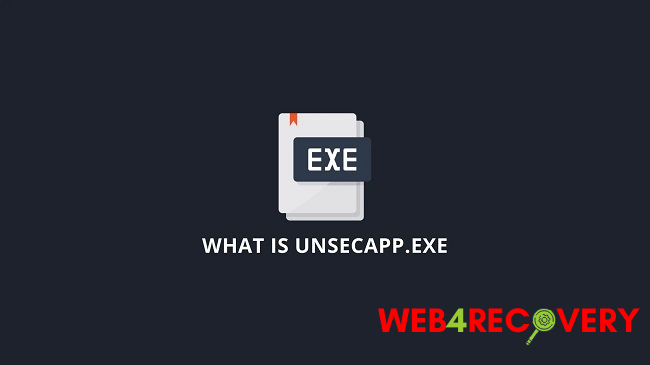Navigating your way around a computer involves coming across various files and processes, some of which can seem mysterious. One such file you may have noticed in your Task Manager is ‘UNSECAPP.EXE.’
In this comprehensive guide, we’ll demystify UNSECAPP.EXE, examine its role, the issues it might cause, and how to troubleshoot them effectively.

Understanding UNSECAPP.EXE
‘UNSECAPP.EXE’ is a software component of the Windows operating system. Its name stands for ‘Universal Sink to Receive Callbacks from Applications.’
It’s a legitimate part of the Windows Management Instrumentation (WMI) subsystem and plays a crucial role in facilitating communication between your computer and remote servers.
The UNSECAPP.EXE process usually runs quietly in the background and shouldn’t cause any problems under normal circumstances. However, issues may arise if malware disguises itself as UNSECAPP.EXE, leading to various system issues.
Common Issues Related to UNSECAPP.EXE
The most common issues associated with UNSECAPP.EXE typically arise when a malicious program impersonates this process. These issues include:
- Increased CPU Usage: An abnormal spike in CPU usage is often associated with malware. If you notice that UNSECAPP.EXE is consuming a significant amount of CPU resources, you should investigate.
- Frequent System Crashes: If your system is frequently crashing and you see UNSECAPP.EXE consistently running in your Task Manager, this could indicate a problem.
- Slow Computer Performance: Experiencing sluggish performance on your computer could be a sign that a malware is running disguised as UNSECAPP.EXE.
Troubleshooting UNSECAPP.EXE Issues
When dealing with potential UNSECAPP.EXE issues, it’s crucial to take careful steps to avoid impacting crucial Windows functions. Here’s how to troubleshoot:
- Check the File Location: The genuine UNSECAPP.EXE file should be located in the System32 folder. To verify this, open Task Manager, right-click on UNSECAPP.EXE, and choose ‘Open file location.’ If the revealed location isn’t the System32 folder, you might be dealing with malware.
- Run a Full System Scan: If you suspect that UNSECAPP.EXE might be a virus, run a full system scan using a reliable antivirus software. This process can help detect and remove any potential threats.
- Update Your System: Ensuring that your Windows operating system is up-to-date can also help resolve issues related to UNSECAPP.EXE. You can update Windows by going to ‘Settings’ > ‘Update & Security’ > ‘Windows Update’ > ‘Check for updates.’
- Perform a Clean Boot: This process can help you determine if a third-party application is causing the issue. In a clean boot state, Windows starts using a minimal set of drivers and startup programs. You can perform a clean boot by following the steps provided by Microsoft Support.
Conclusion
Although seeing UNSECAPP.EXE running in your Task Manager might initially raise some concerns, it’s typically a normal part of your Windows operations.
However, it’s essential to stay vigilant for potential issues and know how to troubleshoot them effectively.
By understanding what UNSECAPP.EXE is and the problems it may cause, you can ensure that your system continues to run smoothly and securely. Happy computing!

















